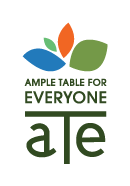It’s easy to find statistics about the state of hunger in New York City and just as easy to help reduce food insecurity. With a population of almost nine million, and one of the highest costs of living in the United States, many New Yorkers are forced to decide between food and other necessities.
The food facts: Who’s going without.
City Harvest reports that there are 1.3 million New Yorkers who face hunger at some time during the year, including one in five children, despite many federal and city programs and nearly 25 million visits to soup kitchens and food pantries across the five boroughs.
In its report, “The Uneaten Big Apple: Hunger’s High Cost in NYC,” Hunger Free America includes good news that the number of food insecure New Yorkers has declined as the economy has improved, although a significant number of New Yorkers still struggle to make ends meet. Looking back over a five-year period, fewer people suffered from food insecurity between 2015-2017 (12.8%), as compared to 2012-2014 (16.4%)—a 22% drop. While this is excellent news, there is still need to address remaining food insecurity.
The largest government program for food aid—Supplemental Nutrition Assistance Program (SNAP) is relied upon by more than 1.6 million New Yorkers. SNAP benefits provide an important supplement to working families with unstable work opportunities. Research shows that most working age SNAP recipients move in and out of the program, as they move in and out of work, supplementing both unemployment and low wages.
You can help, here’s how.
So, what can you do to help your fellow New Yorkers get three good meals a day?
- Become an advocate. Local legislation pertaining to hunger is regularly reviewed, voted upon and updated. Hunger Solutions New York is a great resource to learn what’s on the docket in NYC. Sign up and lend your voice to the issues that matter to you.
- Volunteer your time or skills. We know there’s so little time left in the day after work and family, exercise and errands. The list goes on. But, there’s a sense of satisfaction that comes from volunteering your time that words don’t do justice. A food bank is a great place to start. Check Feeding America for local listings. And, share your experience with us in the comments section below.
- Volunteer to help sign up people who are eligible for, but not currently receiving benefits from Federal Nutrition programs, e.g., SNAP, WIC and Summer Meals, which provide resources to help recipients supplement their daily food needs. City Council members and local community organizations are good sources of information on volunteer opportunities.
- Sign up for Olio food sharing and do your part to help reduce food waste.
- Donate. Provide financial support to organizations to help them support staff, facilities and programs to deliver local community-based services.
It’s important for all New Yorkers to get involved in helping their community. Ample Table for Everyone has been providing grants to New York City based organizations working to fight food insecurity for six years. Please refer to our grants page for the organizations you have helped through your support of ATE.

